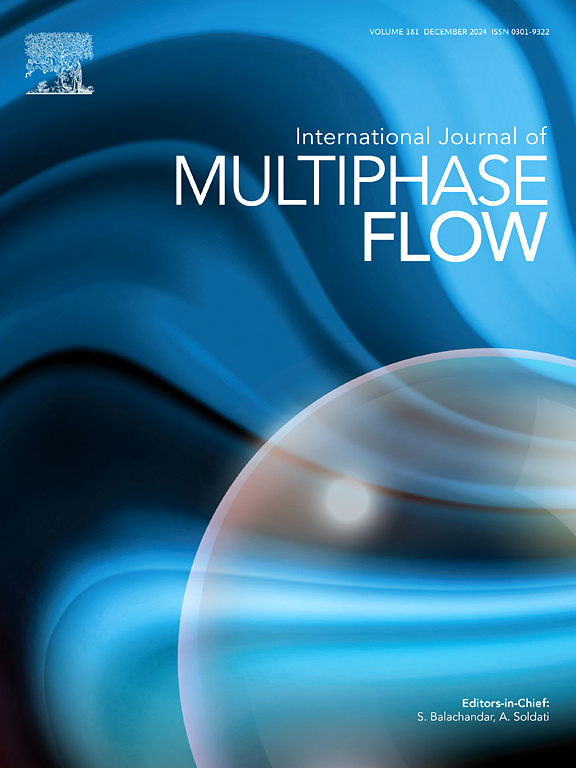Evaluation of turbulent co-flow effects on liquid fuel atomization including spray evolution from a pressure swirl atomizer
IF 3.6
2区 工程技术
Q1 MECHANICS
International Journal of Multiphase Flow
Pub Date : 2024-12-12
DOI:10.1016/j.ijmultiphaseflow.2024.105100
引用次数: 0
Abstract
Optimizing combustion systems is imperative due to current environmental and energy demands. To achieve optimal performance once liquid fuel is used for firing such systems, the liquid fuel atomization process needs to be well controlled as it determines all the subsequent multiphase flow evolution in the system. In pressure swirl atomizers, the atomization process typically relies on the combined effects of turbulent kinetic energy and non-axial kinetic energy of the fuel as it exits the nozzle. Notably, the incorporation of co-flow in the spray burner provides additional energy due to the turbulent co-flow level. In this study, numerical techniques are employed for the first time to assess the impact of varying mass flow rates of turbulent co-flow on in-nozzle flow dynamics, liquid atomization, and subsequent processes of an N-heptane spray jet from a swirl simplex atomizer. Appropriate droplet size and velocity measurements, achieved utilizing Phase Doppler Anemometry (PDA) alongside microscopic shadowgraphy to visualize spray atomization phenomena for a single co-flow mass flow rate value, are used as reference validation data. Numerically, a seamless coupling of the Volume of Fluid method (VOF) and the Lagrangian Particle Tracking (LPT) approach within a Large Eddy Simulation (LES) framework is applied. Prior to any analysis, the consistent agreement observed between simulation results and available experimental findings underscored the effectiveness of the employed approach in accurately predicting and thoroughly exploring the whole phenomena under study. Then, the impact of varying the co-flow mass rate is quantified on the in-nozzle flow-dynamics and the flow field in proximity to the gas–liquid interface. In particular, changes in the primary and secondary breakup, initial and outer spray cone angle are evaluated in terms of liquid fuel sheet thickness, breakup length and Weber number as a function of mass co-flow rates. In the dilute spray region, the effects of different co-flow turbulent conditions on the dispersion of the spray are quantitatively evidenced by means of various spray droplet statistics.

求助全文
约1分钟内获得全文
求助全文
来源期刊
CiteScore
7.30
自引率
10.50%
发文量
244
审稿时长
4 months
期刊介绍:
The International Journal of Multiphase Flow publishes analytical, numerical and experimental articles of lasting interest. The scope of the journal includes all aspects of mass, momentum and energy exchange phenomena among different phases such as occur in disperse flows, gas–liquid and liquid–liquid flows, flows in porous media, boiling, granular flows and others.
The journal publishes full papers, brief communications and conference announcements.

 求助内容:
求助内容: 应助结果提醒方式:
应助结果提醒方式:


